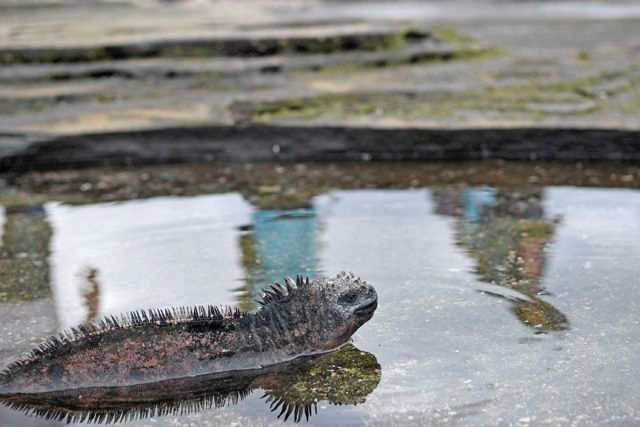Santiago has had many different names in the past due to the various visitors that arrived at the island, particularly English buccaneers and privateers. They were the first to draft a raw map of the islands, and had a preference of what they then called “Duke of York” island and then “James”, after their king. The island provided them with safe anchorages, some fresh water, and tortoise meat. Today, this past is long gone, and the Galapagos National Park Service has carried out major conservation and restoration projects, which make this one of the most beautiful islands of the archipelago. Feral goats and pigs used to roam freely in the island, today eradicated in order to protect this delicate environment. In the early morning we visited Espumilla Beach, one of the five most important sea turtle nesting sites of the Galápagos. The activity of the native “ghost” crabs feeding on the wet sand is striking, and the nearby structures that extend all the way to Buccaneers Cove is quite scenic. There we would have a good opportunity for a final kayaking session. After breakfast we relocated to Buccaneers Cove, where once young naturalist Charles Darwin disembarked back in 1835. This was the island where he spent most of his days ashore during the visit of HMS Beagle. We explored the area by Zodiac looking for marine birds, and at the same time admiring the beautiful coastline. Others chose to snorkel for a last undersea exploration.
In the afternoon, we moved to our new anchorage: Puerto Egas, named after the Ecuadorian gentleman who temporarily owned salt extraction business from a mine in a crater. His business was unsuccessful, and this small territory became part of the natural areas of the Galápagos National Park, therefore the whole island is uninhabited. We landed at the lovely black beach of Puerto Egas for a nature hike, exploring and admiring its beautiful coastline full of Galápagos creatures: marine iguanas, sea lions and fur seals. Sally lightfoot crabs covered the length of the shore; in a recent effort of restoration by the Park Service, it is nowadays possible to have encounters with land iguanas in an island where they were extinct for about 140 years. These are the examples of the many great efforts of conservation and restoration of ecosystems throughout this marvelous archipelago…May the Galápagos remain as “The Enchanted” for many more decades to come.









